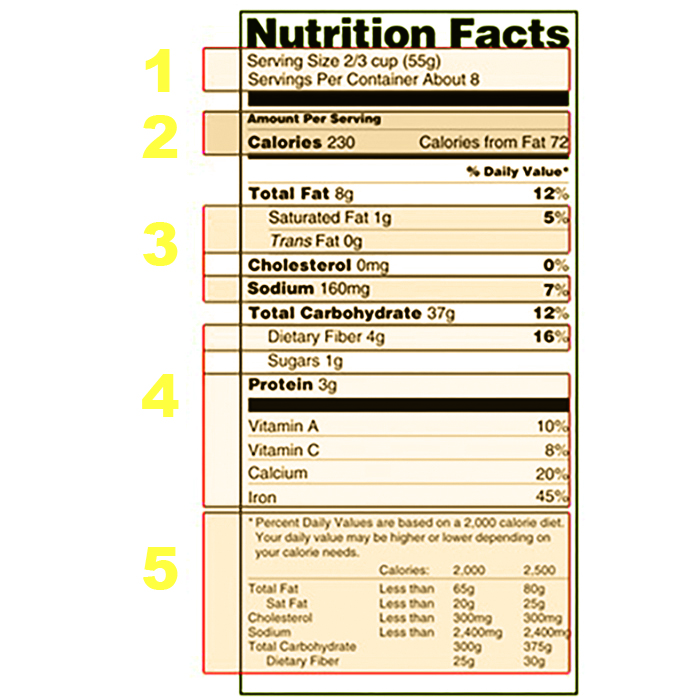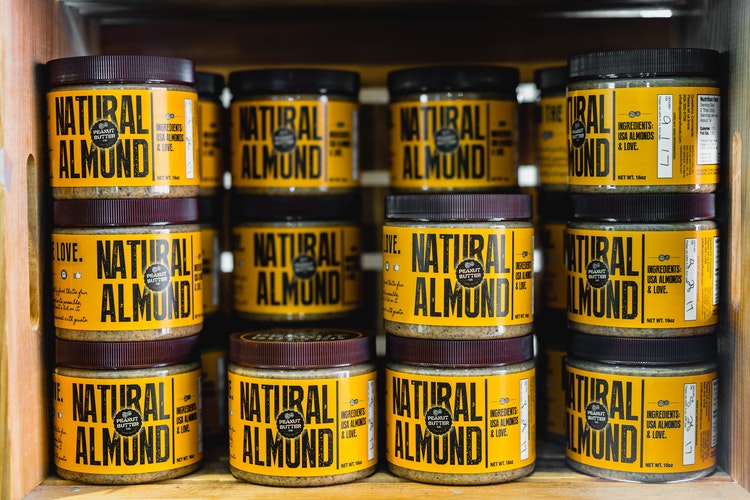Reading food labels to make conscious healthy choices is essential to keep your fitness intact. However, most people simply scan through these labels without identifying what nutritional value their packaged food is providing them. Once you get to know what your processed food is capable of doing to your body with its ingredients, only then you can devise a fitness plan that would help you realize your health goals. Also, understanding about your product will help you make your shopping experience quite easy, helping you make healthy choices.
It is quite important for you to bear in mind that Nutrition Facts mentioned on any product are based on the guideline by Food and Drug Administration of a particular country where it was manufactured. The guideline is designed keeping in view the health of consumers, and some changes are expected in coming years to provide important weight loss information to the buyers.
Understanding Your Food Label
Serving Size
In order to keep your weight in check, it is important for you to pay attention on Portion Control. Counting your calories correctly is equally important. Therefore, before you gulp down your canned delicacy, it is important to check its serving size as it will enable you to follow portion control and count calories.
Read about Portion Control Diet by clicking here.
Serving helps manage portions: A common misconception amongst buyers is that serving size is amount of food that you should consume. Serving size is the possible amount of food any consumer can eat during one food session. However, it is necessary for you to consume all the food in one go. You should only eat a portion depending upon your body requirements.
Serving helps calculate calories correctly: Tracking calories apps use serving size as a standard amount. It is important to adjust the default mode according to the amount of food that you are consuming.
Calories
No matter what diet plan that you have incorporated into your fitness regime, calories play the most important role in your weight loss journey. If your diet comprises of high quality calories, it would be easier for you to manage your weight. But it is quite important that you are mindful about the amount of calories that you consume each day.
When shopping for a product read its label to figure out how much calories your body will be gaining by consuming a portion of that food. Now compare the number of calories to other products available in the market and see if you can make the best choice.
![]()

Fats
Consuming healthy fats are very beneficial for your health, however, you should refrain from eating fats that are loaded with calories. When scanning through food labels, make it a point to read the amount of fat grams of that particular product. Then move to the information listed about saturated and trans fats.
To read about Processed Foods click here.
Saturated Fats
Though some recent studies indicate that saturated fats may not be as unhealthy as thought earlier, food experts still insist that it should be consumed sparingly, while consuming more monounsaturated or polyunsaturated fats to keep the body healthy.
Trans Fats
Trans fats are unhealthy for the body and should be avoided. Try choosing foods with zero or minimum amount of trans fats.
Cholesterol
Cholesterol from eggs and other dietary sources is good for you, still most experts agree that it’s best to keep a check on your intake.
Read about Healthy Foods That Increase Your Stamina by clicking here.
Carbohydrates
Though counting carbs can be problematic, it is best to watch out for the sources from where your carbs are being derived. Food labels can help you with this information. However, it is important for you to read beneath the Carbohydrate section, to get detailed information.
You can know whether your carbs are from good sources or not by paying attention to the following details.
Dietary Fiber: Fiber is one of the most healthy food components and gives the feeling of fullness for a long time. Choosing foods with high fiber can help you follow your diet regime. Veggies such as spinach and products like whole grain are also rich in fiber. Some foods have added fiber which helps the body in getting surplus of this wonderful food component.
Sugar: It is always advisable to watch your sugar intake as it can lead to sudden weight gain and many other health issues. If weight loss is your goal, then you should choose products that have less sugar. However, contrary to the common belief, all foods with high sugar content are not bad for health. So when deciding to purchase a product, you should opt for foods with zero or minimum “Added Sugars.” Added sugars are usually empty calories, increasing your daily calorie intake without providing you with any nutrition.
Protein
An important food ingredient that helps you gain muscle mass, you should choose foods with protein such as lean protein and low-fat dairy. Before you make your purchase, just see how many fat grams there are in your product. Compare products and choose items that don’t have high fat grams to ensure that you stay healthy. There are many protein foods that come with high saturated fat and some dairy food products come with unhealthy trans fats.
Vitamins And Minerals
For healthy individuals sodium consumption should not exceed more than 2300 milligrams per day. People who suffer some medical complications related to sodium intake should follow doctor’s recommendation.
Food details under the black thick bar also provide important information regarding your product. By carefully scanning food labels you should be able to identify foods that provide more nutritional value and contain less calories.
Percent Daily Value
Usually shoppers don’t pay much attention to “Percent Daily Value.” This figure tells you the amount of each nutrient present in your diet when you consume 2000 calories daily. If your consumption is less than 2000 calories, then the information given in this column will not provide you correct insight about your nutritional intake.
Percent Daily Value is a good way to provide you an overview whether your product is rich in particular nutrient or not. If a nutrient in Percent Daily Value is 5{317a7769e272dec17b69bda26c6a5a4c5e6799efcd8a85f72cb552b76862c2b9} or less, then the food is not rich in that particular nutrient. However, a nutrient with 20{317a7769e272dec17b69bda26c6a5a4c5e6799efcd8a85f72cb552b76862c2b9} or more in Percent Daily Value is abundantly rich in that product.





